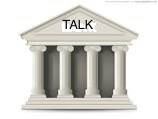| TalkBank | 
| Digital Audio |
This page provides suggestions for researchers who wish to create audio files for analysis with the CLAN editor and other TalkBank programs.
For detailed phonological work, it is best to use 16-bit WAV format in stereo at either 22,050 or 44,100Hz. An even better format is 24-bit at 48K. However, for many purposes, recording in compressed formats such as MP3, AAC, or OGG is quite acceptable, as long as you use the high-quality versions of these formats. However, we need to convert these other formats to MP3 for web delivery. So, recording in MP3 from the start is best. Also, please use CBR (constant bit rate) rather than VBR (variable bit rate)in MP3, because VBR recordings do not sync correctly in time values.
Recording: There are five possibilities:
- If you are recording audio along with video, then you can consult the recommendations for digital video.
- Laptop computers can function as digital audio recorders. All you need is an external USB microphone, such as the Yeti from Blue Microphones, and recording software. For Mac software, we recommend Amadeus Pro. For Windows, you can use Audacity.
- You can buy the Olympus VP-10 USB recorder for about $70 which will record a couple of days of audio before getting full. It takes power from the USB port, so you need to charge it up for 3 hours prior to the first use. You need to place this recorder in the middle of a conversation or pinned to the child and avoid bumping it around.
- In terms of a full-featured single unit hand-held WAVE recorder, our current top choices are the Marantz PMD620 and the Zoom H1. The files produced by these separate units can be transferred to your computer using USB.
- If you need to record children who are moving around, the best choice is a wireless microphone, such as the Sony ECM-AW4. For longer recording life, you will want to use lithium AAA batteries with this unit.
Decreasing Noise: Try to avoid recording near traffic or
other external noises. Rooms with carpets have fewer echoes and floor
noises than rooms with hard floors. Ongoing noise from televisions,
radios, stereos, washing machines, computer fans, and other appliances
can ruin a recording. If noise is coming through an open window,
consider closing it. Try to minimize spurious background noises or
noises caused from bumping the microphone onto hard surfaces or jostling
the microphone cord. Try to keep the microphone out of clear view so
that the child will not try to talk directly into it.
Some researchers prefer to do their work in sound-proof rooms in a
laboratory. Although it may be difficult for infants and mothers to
adapt to the needs of getting to a laboratory, the results can be better
acoustically. Although children produce less vocalization in such an
environment, the nature of their vocalizations is similar, as has been
demonstrated in Ledeweg et al. (1994).
You can also use the tape recorder as a notebook. You can record
commentary directly onto the tape when the child is not talking and you
are in a different room. You can begin each casette with a statement of
the date, the year, the name of the child, the nature of the setting,
and so on. This practice is very helpful in identifying tapes that have
been otherwise mislabeled.